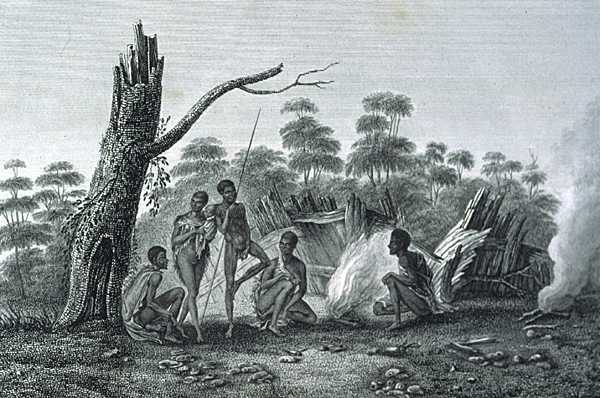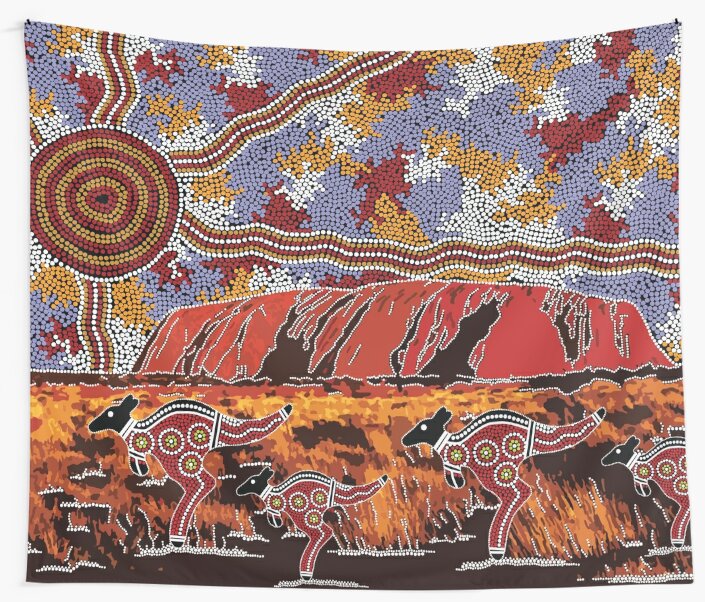Before the Invasion: A Glimpse into the Rich Tapestry of Aboriginal Australia
Before the Invasion: A Glimpse into the Rich Tapestry of Aboriginal Australia

Australia, a land of vast deserts, rugged mountains, and vibrant coastal landscapes, is often associated with its colonial history and the iconic image of the Outback. However, the story of this continent begins long before the arrival of Europeans, with a vibrant and complex tapestry of Indigenous cultures that thrived for tens of thousands of years.
The Aboriginal people, the original inhabitants of Australia, have a deep and enduring connection to their land. Their history is one of resilience, ingenuity, and a profound understanding of the natural world. This article delves into the lives of Aboriginal tribes before colonization, exploring their diverse cultures, social structures, and unique ways of life.
Related Articles: Before the Invasion: A Glimpse into the Rich Tapestry of Aboriginal Australia
- Australia’s Linguistic Tapestry: A Blend Of Official And Unofficial Tongues
- Indigenous和aboriginal谁更具有贬义?Title
- Will English Remain The Dominant Lingua Franca? A Look At The Future Of Global Communication
- The Complexities Of "Full-Blooded" In Australia: Unpacking Identity And Ancestry
- Stolen Childhoods: Growing Up Through The Trauma Of The Stolen Generation
A Land of Diverse Cultures:
Australia boasts a staggering diversity of Aboriginal cultures, each with its own unique language, traditions, and spiritual beliefs. It’s estimated that over 250 distinct languages were spoken across the continent before colonization, each representing a rich cultural heritage. This linguistic diversity reflects the vast geographical expanse of Australia and the adaptability of its people to diverse environments.
From the arid heartland of the Outback to the lush rainforests of the east coast, each tribe developed a profound understanding of their local environment. This knowledge, passed down through generations, guided their survival, shaped their social structures, and informed their spiritual beliefs.
The Significance of Land:
For Aboriginal Australians, land is not simply a resource to be exploited but a living entity, a source of sustenance, and a fundamental element of their spiritual identity. Their connection to the land is deeply personal and spiritual, woven into their myths, songs, and ceremonies.
The concept of "Country" goes beyond mere geography; it encompasses the land, its flora and fauna, the water sources, and the spirits that inhabit it. Each tribe has a deep understanding of the intricate web of life within their Country, and their responsibilities extend to its care and preservation.
Social Structures and Kinship:
Aboriginal societies are characterized by complex social structures based on kinship ties and a strong emphasis on community. Family and clan relationships are central to their social organization, with intricate systems of lineage and responsibility.

The concept of "Dreaming," or ancestral creation stories, plays a vital role in shaping social structures. These stories explain the origins of the land, its features, and the people who inhabit it. They also serve as a guide to social behavior, morality, and responsibilities within the community.
The Importance of Ceremony and Ritual:
Ceremony and ritual are deeply ingrained in Aboriginal life, serving as expressions of their spiritual beliefs, social connections, and connection to the land. These ceremonies, often elaborate and visually stunning, are a vital part of their cultural heritage and provide a means of transmitting knowledge, reinforcing social bonds, and honoring their ancestors.
From the intricate dances of the Yolngu people in Arnhem Land to the elaborate initiation ceremonies of the Warlpiri in the Western Desert, each tribe has its own unique set of rituals and traditions. These practices reflect their deep understanding of the natural world, their reverence for the ancestors, and their commitment to maintaining the balance of the universe.
Art and Storytelling:

Aboriginal art is a powerful form of expression, capturing the essence of their culture, spirituality, and connection to the land. From rock art to intricate sand drawings, their artistic traditions are a testament to their creativity and their deep understanding of the natural world.
Storytelling, both through oral tradition and visual art, plays a crucial role in preserving their history, cultural knowledge, and spiritual beliefs. Stories are passed down through generations, connecting the present to the past and ensuring the continuity of their cultural heritage.
The Impact of Colonization:
The arrival of European settlers in the 18th century marked a dramatic shift in the lives of Aboriginal Australians. Colonization brought with it a wave of dispossession, displacement, and cultural suppression.
The European concept of land ownership clashed with the Aboriginal understanding of Country, leading to widespread land alienation and the destruction of traditional ways of life. The introduction of diseases, such as smallpox, decimated populations, and the forced assimilation policies aimed to erase their cultural identity.

Resilience and Resistance:
Despite the devastating impact of colonization, Aboriginal Australians have shown remarkable resilience and resistance. They have fought to maintain their cultural traditions, their connection to their land, and their sense of identity.
The struggle for recognition and self-determination continues today, with Aboriginal communities working to reclaim their land, language, and cultural heritage. They are actively engaged in promoting their art, music, and storytelling, ensuring that their voices are heard and their rich cultural legacy is preserved for future generations.
A Legacy of Wisdom and Connection:
The story of Aboriginal Australia before colonization is a testament to the ingenuity, resilience, and deep connection to the land of its people. Their understanding of the natural world, their complex social structures, and their vibrant cultural traditions offer invaluable lessons for the present and the future.
As we move forward, it is crucial to learn from the past, acknowledge the injustices faced by Aboriginal Australians, and work towards a future where their cultural heritage is celebrated, respected, and protected.
FAQ about Indigenous Tribes in Australia Before Colonization:
Q: How long have Aboriginal people lived in Australia?
A: Aboriginal people have lived in Australia for at least 65,000 years, making them one of the oldest continuous cultures on Earth.
Q: How many different Aboriginal tribes were there before colonization?
A: It is difficult to estimate the exact number, but it is believed that there were over 250 distinct Aboriginal tribes in Australia, each with its own language and culture.
Q: What were the main social structures of Aboriginal tribes?
A: Aboriginal societies were based on kinship ties, with complex systems of lineage, clan relationships, and responsibilities. They were also highly communal, with a strong emphasis on sharing and cooperation.
Q: How did Aboriginal people adapt to the diverse environments of Australia?
A: Aboriginal people developed a deep understanding of their local environments, utilizing their knowledge of plants, animals, and water sources to survive and thrive in diverse ecosystems across the continent.
Q: What was the impact of colonization on Aboriginal people?
A: Colonization had a devastating impact on Aboriginal people, leading to dispossession, displacement, cultural suppression, and a significant loss of life.
Q: What are some of the challenges faced by Aboriginal Australians today?
A: Aboriginal Australians continue to face challenges related to poverty, health disparities, and limited access to education and employment. They are also working to reclaim their land, language, and cultural heritage.
Q: How can I learn more about Aboriginal culture and history?
A: You can learn more about Aboriginal culture and history by visiting museums, attending cultural events, reading books and articles, and supporting Aboriginal-owned businesses. It is also important to engage with Aboriginal communities and learn from their perspectives.

Closure
Thus, we hope this article has provided valuable insights into Before the Invasion: A Glimpse into the Rich Tapestry of Aboriginal Australia. We hope you find this article informative and beneficial. See you in our next article!


